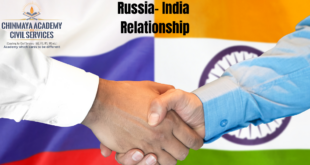- Coalition politics in Nepal increasingly resembles the game of musical chairs; in Kathmandu too, it is the same cast of characters who have been taking turns for nearly two decades.
- The tragedy is that scant attention is paid to the critical issues — unemployment, national indebtedness and development challenges.
A coalition collapses again
- The last coalition government, formed in December after the elections last November, has lasted just two months.
- It was stitched together by UML leader K.P. Sharma Oli with the idea of breaking away the Maoists by promising the prime-ministership to their leader Pushpa Kamal Dahal ‘Prachanda’.
- Prachanda had formed an alliance with Mr. Oli in 2018 that broke down in 2020 after a series of decisions by Mr. Oli (he was then Prime Minister) seeking to marginalise Prachanda and other senior leaders.
- Later, Prachanda and the Madhav Nepal-led breakaway faction of UML, rechristened as the CPN (Unified-Socialist), joined with the Nepali Congress (NC) and formed an electoral alliance in 2022.
- The Nepali Congress emerged as the largest party with 89 seats (the House strength is 275) and Maoists were a distant third with 32. Power-sharing talks collapsed because Prachanda insisted on becoming Prime Minister first.
- Knowing Prachanda’s weakness, Mr. Oli made him an offer he could not refuse. On December 26, Mr. Prachanda was sworn in as Prime Minister and in return, he assured support to the UML for the posts of House Speaker and President.
- Six other parties had joined the coalition. These included disparate groups such as the Rashtriya Prajatantra Party (14 seats) that espouses a pro-monarchy and a pro-Hindutva agenda, and the newly created Rashtriya Swatantra Party (20 seats) consisting of professionals who professed disenchantment with the rampant opportunism in traditional Nepali politics.
- However, both were tempted with offers of Deputy Prime Minister-ships and Prachanda’s cabinet had four deputy Prime Ministers, one each from the Maoists, UML, RSP and RPP.
- Within weeks, Prachanda started chafing as Mr. Oli reverted to his old autocratic ways of calling the shots from behind the scenes.
- Realising that with the Oli nominees as President and Speaker he could easily be out manoeuvred, Prachanda reached out to the NC.
- Anticipating this, NC had voted in support of Prachanda in the confidence vote on January 10, announcing that it had done so in the interests of national consensus governance that could provide stability. Prachanda saw his opportunity to return the favour by espousing the idea of a national consensus presidency and promised support to the NC’s candidate Ram Chandra Poudel.
- The UML called it a “betrayal” and pulled out of the coalition. However, other than the RPP, the other members of the Oli-led coalition declined to follow, announcing their support for Poudel’s candidature.
Presidential elections
- The Election Commission has announced that presidential elections will be held on March 9, followed by elections for the Vice-President on March 17.
- Since the code of conduct will be in effect till March 19, no overt political activity is possible.
The foreign hand
- Since 2008, when Nepal declared a republic, the game of political musical chairs has been a regular phenomenon.
- Normally, it is during these rounds of musical chairs that Nepali politicians start wearing their ‘nationalist’ colours by looking for the convenient scapegoat of the ‘foreign hand’.
- While India has often been blamed, China has played a visible hand in seeking to keep a united communist front but has failed to find a compromise between Oli’s egoistical tendencies and Prachanda’s opportunistic impulses.
- In recent years, India has retrieved some lost ground by focusing on project implementation, such as the Jayanagar-Bardibas railway and the Motihari-Amlekhgunj oil pipeline.
- Power export from Nepal has picked up: the agreement for 364 MW signed in June has yielded export earnings of $60 million in 2022, while looking at increasing power transmission on the 400 kV Muzaffarpur-Dhalkebar line to 800 MW.
- The 900 MW Arun 3 is expected to be operational later in 2023. Meanwhile, some of the high-profile infrastructure projects by China have generated concerns about their economic viability and long-term debt implications.
SOURCE: THE HINDU, THE ECONOMIC TIMES, PIB
 Chinmaya IAS Academy – Current Affairs Chinmaya IAS Academy – Current Affairs
Chinmaya IAS Academy – Current Affairs Chinmaya IAS Academy – Current Affairs

